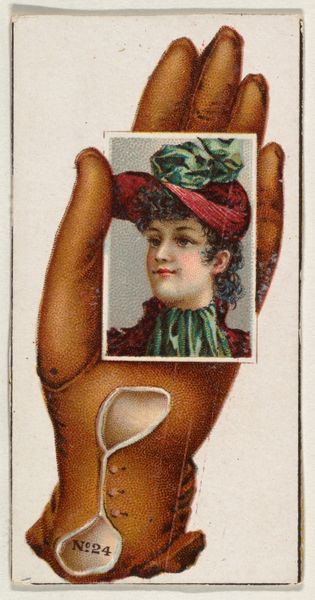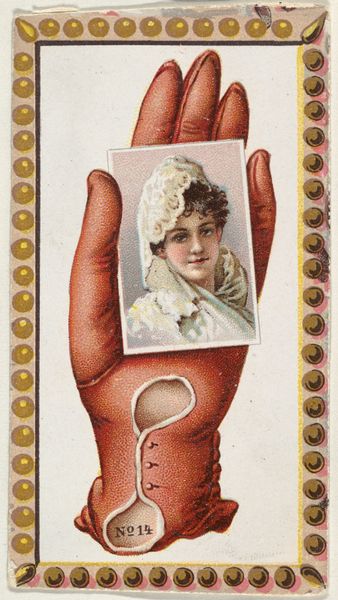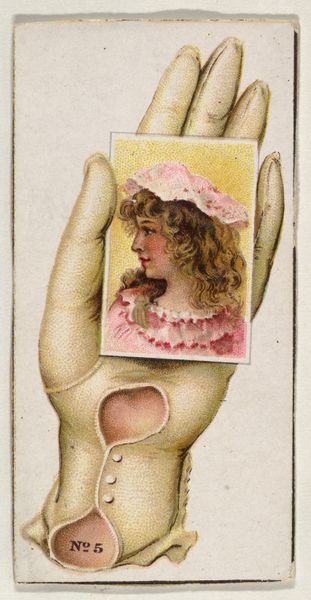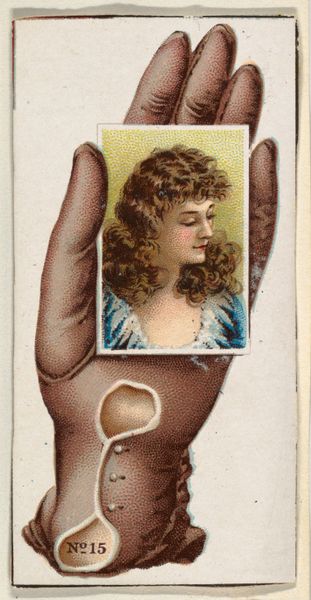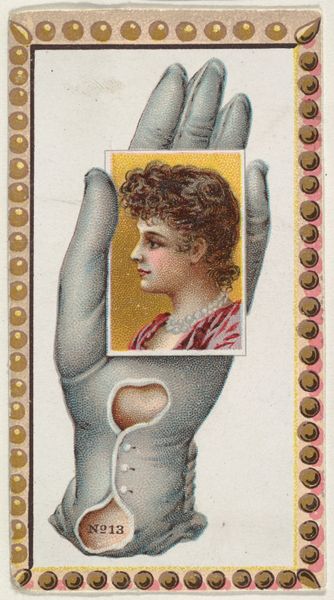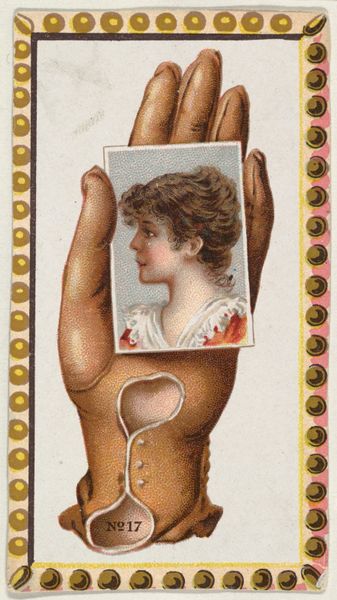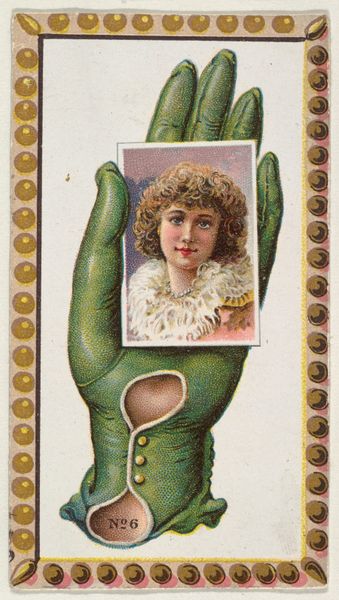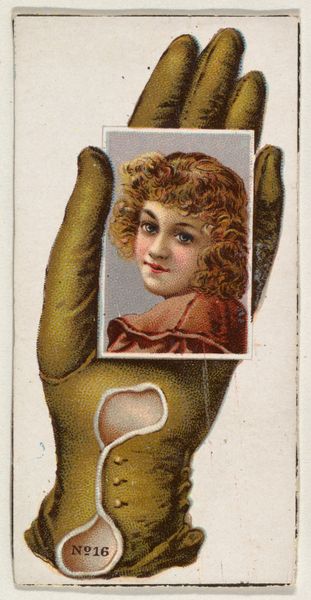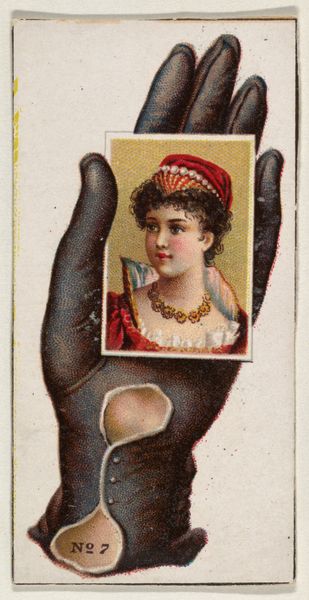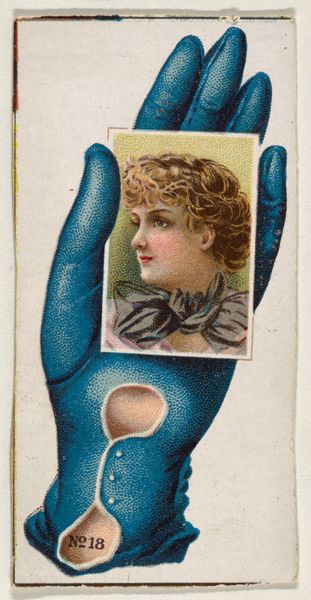
Card Number 24, cut-out from banner advertising the Opera Gloves series (G29) for Allen & Ginter Cigarettes 1885 - 1895
0:00
0:00
#
gouache
#
water colours
# print
#
coloured pencil
Dimensions: Sheet: 3 1/8 x 1 3/4 in. (8 x 4.5 cm)
Copyright: Public Domain
Curator: Here we have Card Number 24, a promotional cut-out from a banner advertising the "Opera Gloves" series for Allen & Ginter Cigarettes, dating to between 1885 and 1895. Editor: My initial reaction is captivated. There's a somewhat absurd quality in the hyper-realism of the glove combined with the inset miniature portrait, creating a bizarre tension in the materiality of the elements. Curator: The use of academic portraiture set within this elaborate border emphasizes the aestheticization of femininity so typical of the late 19th century. The style of portraiture harkens back to classicism while the overall composition has a distinctive influence from Japonisme in its flat design. Editor: Exactly. Notice how the opera glove almost acts as a proscenium arch. The hand isn't merely holding the portrait; it's presenting an ideal of womanhood, almost commodifying it. Opera gloves themselves signify sophistication, wealth, a social performance... Curator: Yes, gloves have had specific and evolving symbol meanings over time, associated with elegance and status, but it may also imply a desire for social connection. The number ‘24’ is situated inside an odd cavity on the glove—rather phallic—almost fetishizing it! Editor: The layering here also provides rich interpretive territory. There is a picture within a picture; there are signs of refinement encased in what would, in a way, hide our bare hand from view. Gloves acted to beautify hands while helping hide signs of working class labor. Curator: Fascinating point, revealing both concealment and the overt staging of social standing. I find this cut-out reveals an implicit association between glamour, performance, and consumerism. The colors themselves -- that sort of burnished umber and pale white—creates a sense of contained luxury. Editor: Precisely! Ultimately, what this reminds me of is the ephemerality of beauty, of fashion... almost hinting at how quickly such trends fade. I notice, for instance, that it makes you wonder what became of the woman shown in the portrait. It provokes us to contemplate how social norms change with time. Curator: I think our visual analyses highlight a work deeply entwined with turn-of-the-century ideals of class and image. Editor: Agreed. A simple promotional object which upon closer inspection, presents rich layers of visual, and social commentary.
Comments
No comments
Be the first to comment and join the conversation on the ultimate creative platform.
